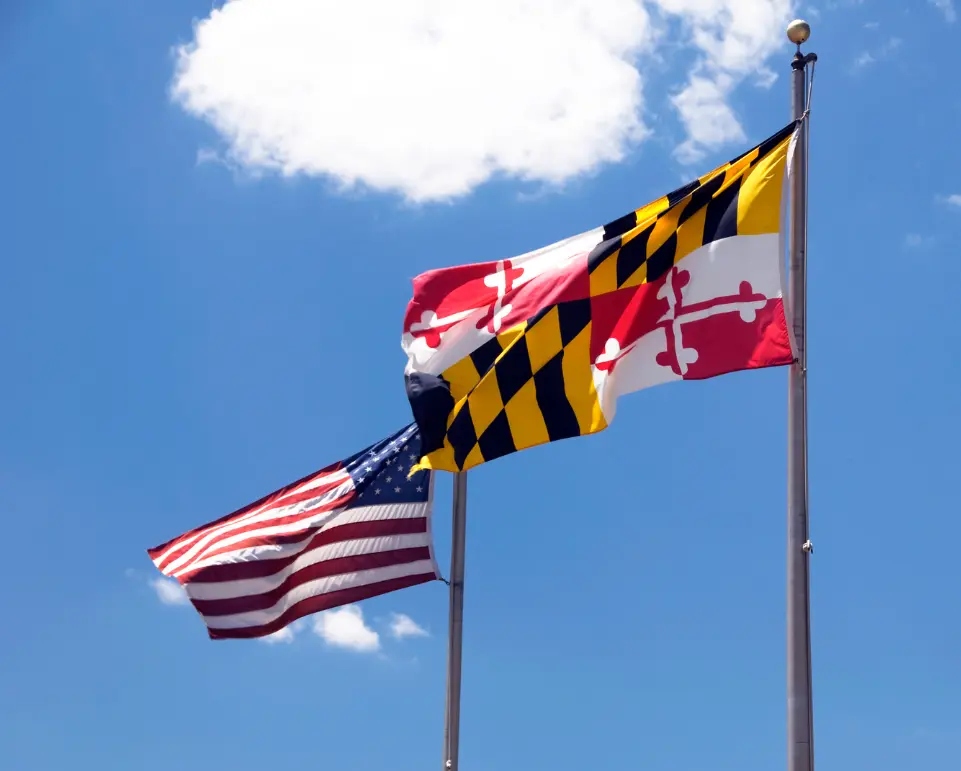Want more information about heat safety standards? Check out our Heat Standards Map page to explore the latest federal and state-level heat safety requirements.
Anticipated Effective Date: Early Fall 2024
Maryland is preparing to enforce a robust heat safety standard aimed at protecting workers in both indoor and outdoor environments. This new regulation will place significant compliance obligations on employers, particularly those with workplaces where the heat index regularly exceeds 80 degrees Fahrenheit.

This new standard was partly driven in response to the tragic death of Baltimore City solid waste worker Ronald Silver II from heat stroke on August 2, 2024.
With rising temperatures becoming the norm, Maryland’s new standard follows similar efforts in states like California and precedes a proposed national heat standard. The regulation is expected to take effect by early Fall 2024. Here’s a detailed overview of the requirements and what steps employers need to take to ensure compliance.
1. Basic Compliance Requirements for Heat Index Above 80 Degrees
Key Actions for Employers:
- Provide Hydration: Employers must supply workers with at least 32 ounces of water per shift. It should be easily accessible and available in cool-down areas.
- Ensure Shaded Breaks: Workers must have access to shaded areas for breaks. When the heat index exceeds 90 degrees Fahrenheit, a 10-minute cooled rest break is required every two hours. If the heat index hits 100 degrees Fahrenheit, this rest period increases to 15 minutes for every hour worked.
- Heat Illness Monitoring: Employers must have a system in place to monitor workers for signs of heat illness. This can be done through phone check-ins, the buddy system, or other suitable methods, such as physiological monitoring using wearables.
- Develop a Written Policy: A comprehensive heat illness prevention plan must be developed, detailing procedures for water access, cool-down areas, monitoring heat indexes, and emergency response. Generic or non-specific plans are insufficient. Not sure how to write one? SlateSafety has provided a free template Heat Injury and Illness Prevention Plan (HIIPP) here.
2. Enhanced Requirements for Higher Heat Indexes
Additional Protocols:
- Monitoring and Recording: When the heat index is expected to reach 95 degrees Fahrenheit, employers must measure and record the temperature and heat index. Monitoring should be more frequent if temperatures are expected to rise significantly or when workers are in high radiant heat areas or wearing heat-restrictive clothing. Here’s an example on how to easily measure and record the heat index indoors.
- Control Measures: Employers must implement a hierarchy of control measures to reduce the risk of heat illness, including:
- Engineering Controls: Use air conditioning, fans, ventilation, and other methods to reduce temperature and heat index.
- Administrative Controls: Adjust work schedules, rotate employees, and reduce work intensity during peak heat periods.
- Personal Protective Equipment: Use cooling garments or other personal protective equipment as a last resort if other controls are insufficient.
3. Training and Acclimatization
- Employee Training: All employees must be trained on the risks of heat illness and the specifics of the heat illness prevention plan. Supervisors require additional training on how to respond to heat illness symptoms and monitor hot weather advisories.
- Acclimatization Protocols: New employees or those returning after a long absence must be closely monitored during the first 14 days, as they acclimatize to the heat. Tools like real-time dashboards and physiological monitors can assist in providing real-time alerts based on core body temperature during these crucial periods.
4. Exceptions to the Rule
Notable Exemptions:
- Brief Heat Exposures: The rule does not apply if employees are exposed to temperatures above 95 degrees Fahrenheit for less than 15 minutes per hour.
- Telework and Emergency Operations: Telework locations chosen by the employee and emergency operations directly involved in protecting life or property are exempt from the rule.
Employers in Maryland should start preparing now to comply with these new regulations. By implementing these measures, businesses can protect their workers’ health and avoid potential legal and financial repercussions.

